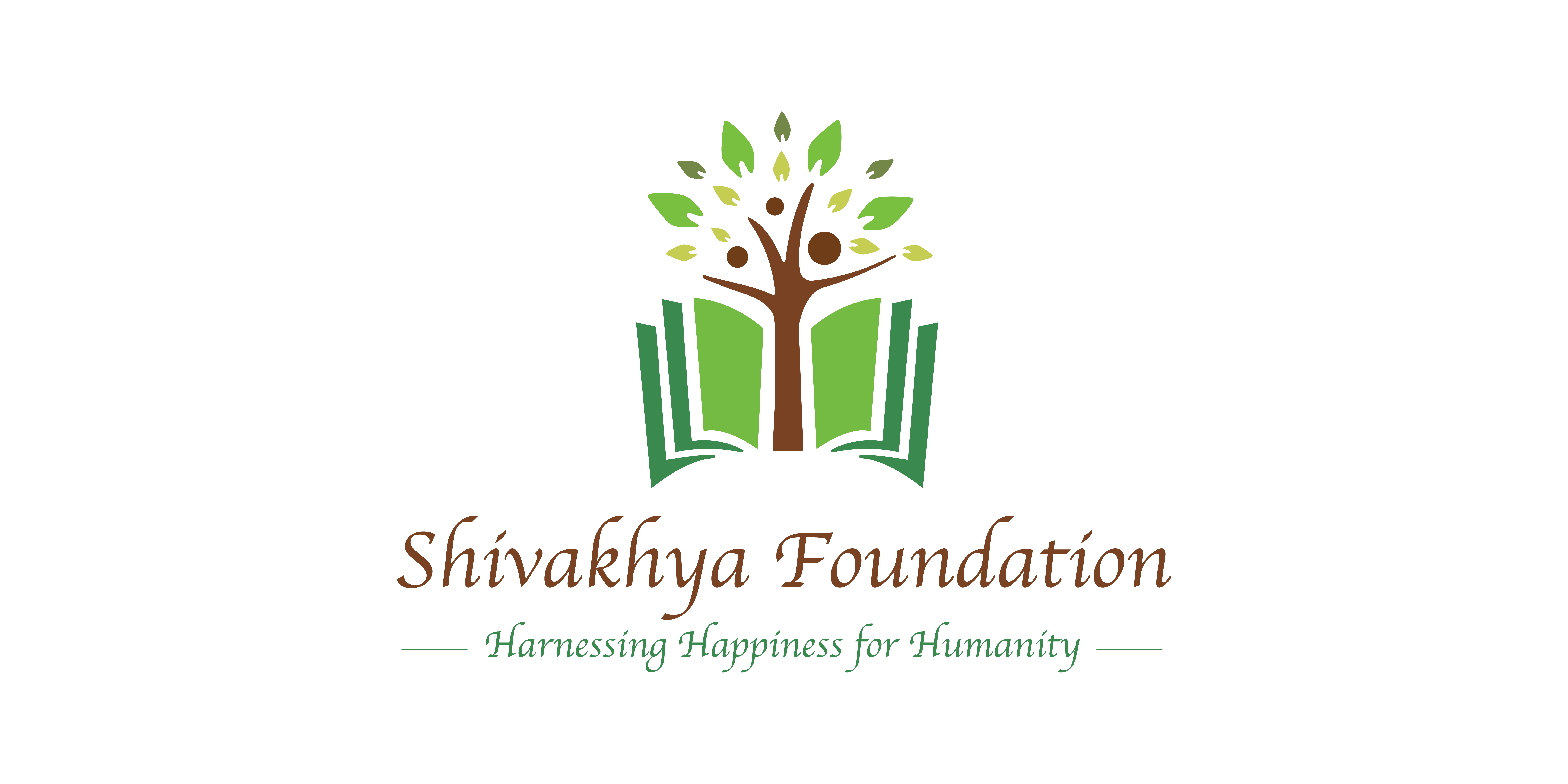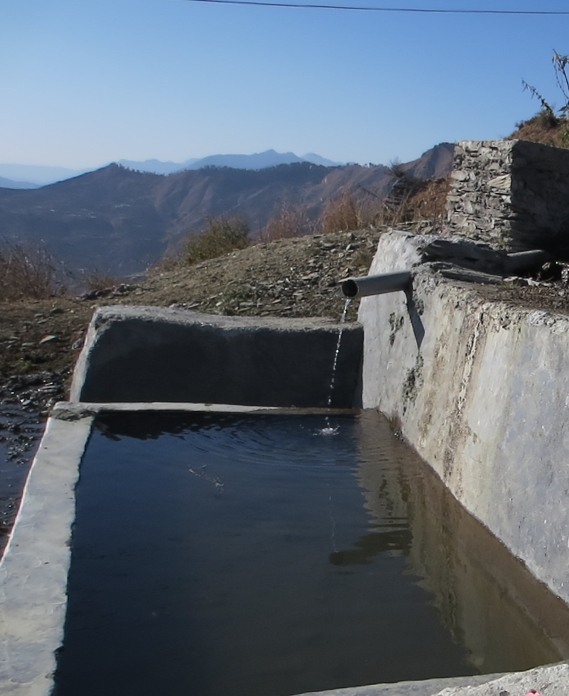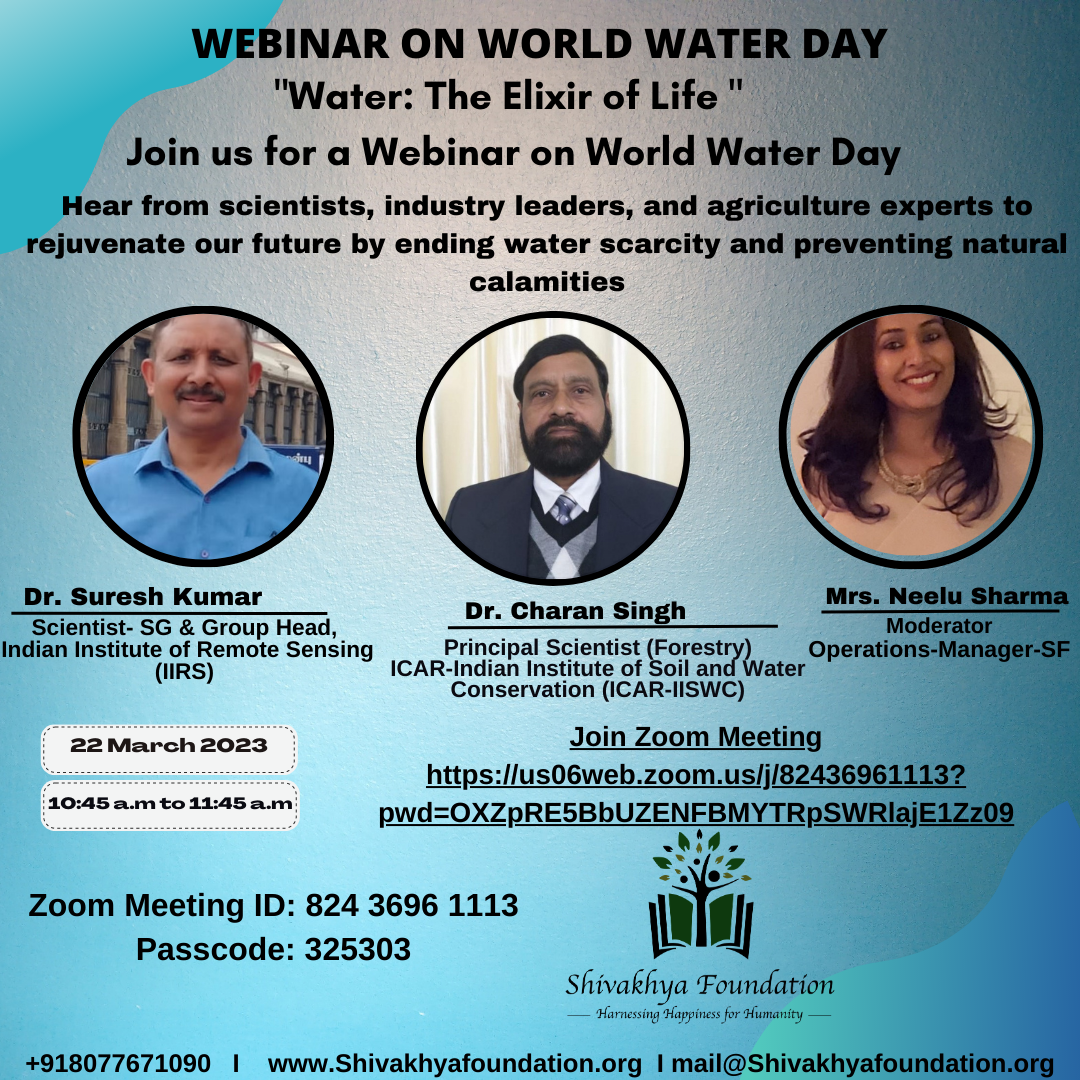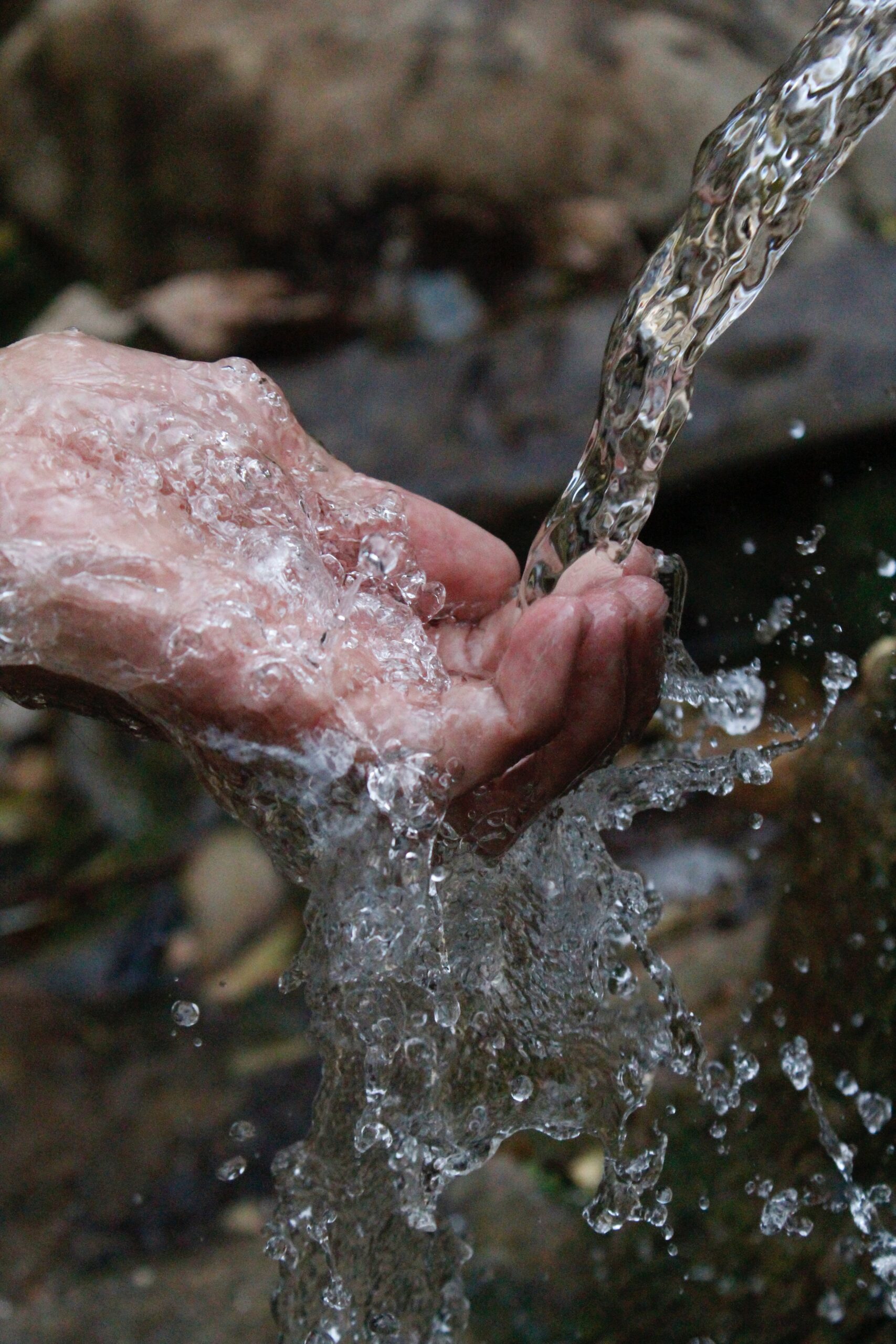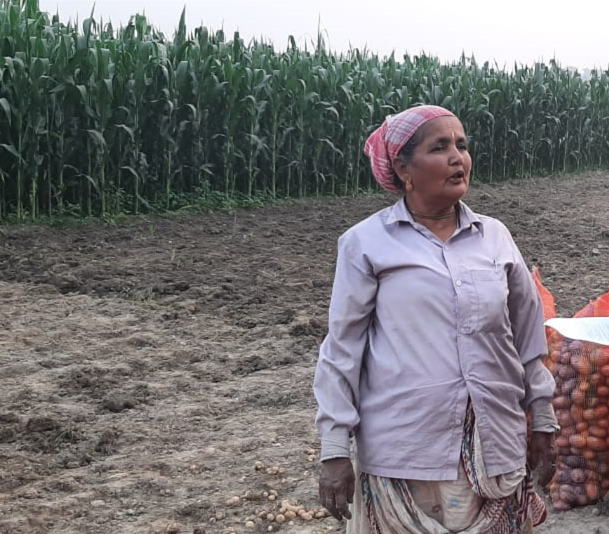Integrated Farming System in Watershed Management – IFS

Integrated Farming System(IFS).. What is it?
Integrated Farming system is farm management system which integrates different means of Agriculture cultivation in a small space of land with an objective of maximum utilization of available resources to harvest maximum possible output.
Integrated Farming System(IFS)..Why there is need ?
In India around 85% are small and marginal farmers having less than 1 hectare land . To have good income from the limited size of available land, it is must for the farmers to have maximum utilization of the land .
Integrated Farming System(IFS)..How to have Maximum Utilization ?
It is important to plan and execute more number of activities per unit area in such a way that all the selected activities have a chain and provide synergism for growth of all the activities.
Integrated Farming System(IFS)..What is the Principle?
The principle of IFS focuses on the maximum utilization of resources in such a way that the farmers can be ensured of getting income throughout the year at least from one or other interventions
Example of Integrated Farming System(IFS)
Agriculture crop + Horticulture + Fishery + Poultry + Duck + Cow/goat + Apiculture
Specialty of Integrated Farming System(IFS)
Two or more Agri based interventions are taken in such a way that:
- The input cost can be reduced
- The Productivity i.e out put per unit area increases
- Throughout the year income
- Different needs from limited area gets fulfilled that too with an additional income
- Finally,an improvement in life
Economics:
If in 1 hectare of land ,Wheat and Rice crops cultivation is done then one can get Rs 60,000/-but with Integrated farming system , it will provide three times more income with 3 times more job opportunity.
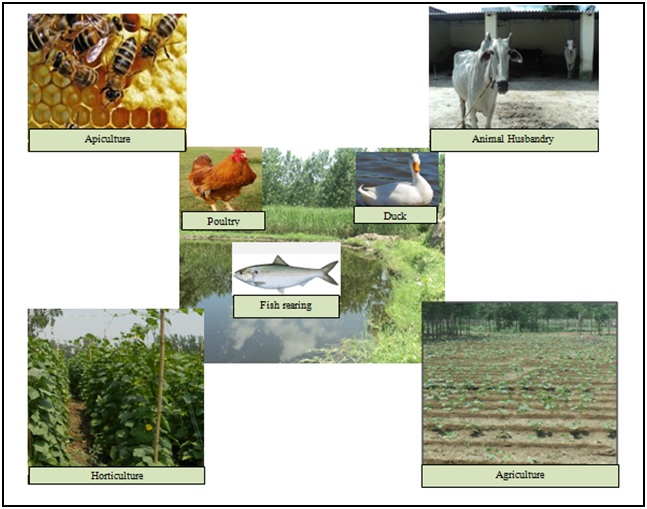
Components of Integrated Farming System(IFS):
- Fish farming
- Duck farming
- Poultry farming
- Animal husbandry
- Horticulture crop
- Apiculture
Fish farming
On a piece of land, Fish Pond can be constructed .The fish production and its marketing can be done throughout the year as it has round the year demand .
B.Duck farming
On one side of pond, the duck farming can be done . The movement of ducks in water increases the availability of oxygen and make more oxygen available for fish. So, fish population increases very fast. Not only this, the duck will eat away the larvae and other insects in water. This way the water will remain clean and disease free. The droppings of Duck will also act as an important feed for the fish.
C.Poultry farming
Above the Pond ,Poultry farming can also be done in vertical space .It will save the space. Like that of duck, the droppings of Poultry will act as an important feed for the fish. This way the feed cost will reduce by 20-30%. The egg production from poultry will fetch better price and regular income.
Animal Husbandry
Along with it, Animal husbandry can be done with 3-4 animals including Cow & goat. Cow can provide milk for domestic use along with ensuring a quality &purity. The goat commonly called as poor man’s cow yield nutritious milk. The cow dung after decomposition can be used as useful manure. The Vermi composting provide good quality compost. Apart from using in field ,selling of vermicompost in market can fetch good price. The animals remains can be used in fish pond for fish. 3 cow @15kg Cow dung/day gives 40-50 kg Cow dung /day. This can produce 2-3m3 bio gas .This is sufficient for kitchen cooking and fulfill the needs of a family with 4-5 members
Horticulture crop
Along with wheat crop, a leguminous pulse crop can be taken for ensuring nitrogen fixation. So, there will be less need for expenditure on purchasing nitrogenous fertilizer. The Pond will acts as source of water for irrigation .The moisture around the pond can better be utilize by growing Crops with in the vicinity of Pond .Orchards crops like Papaya, Guava & Vegetable crops like okra etc can be grown around the pond. In such condition even if an intervention yield less out put due to climate change or any other reason, still the farmers can ensure an income .So, the Integrated farming system(IFS) provides an adaptation to climate resilience .
Apiculture
Bee farming can be done in vicinity of Horticulture crop area . This will enhance the income generation through honey production. The honey bee will ensure better pollination in horticulture crops and play a vital role in horticulture development
In Watershed Management, the integration of different components in an Integrated farming system(IFS) provides a synergism and helps the village community to
- get an assured income throughout the year
- helps to develop better production system and micro enterprises
- ensure an optimum use of available Natural resources
To sum up, the Integrated farming system(IFS) is just like a train with interventions as its interconnected boggies. The trains derives its energy to move from these interconnected boggies .Each of these boggies provide a synergistic effect to move the train .That’s how the selected interventions as components of Integrated farming system(IFS) plays a vital role in ensuring a better livelihood in Watershed Project.


